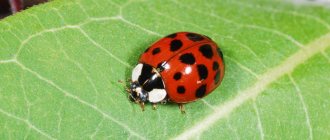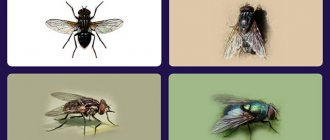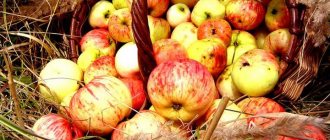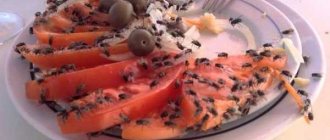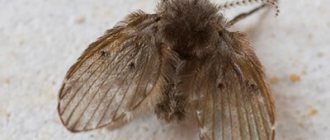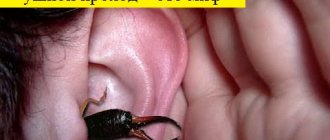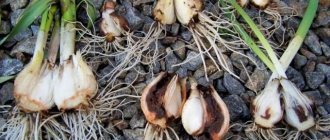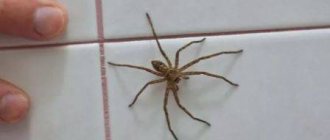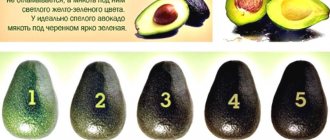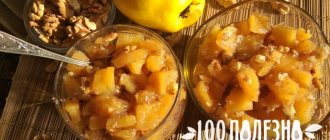What do flies like?
At home, several species of flies live near humans.
The most common house fly is the house fly. The synanthropic species is not adapted to life in the wild; it feeds on almost everything that humans eat, as well as garbage, waste, and excrement. The insect prefers liquid food because it is absorbed faster; pests love sweet dishes. They are attracted to products that show signs of rotting. There are also dishes that flies prefer, and those that are eaten if there is nothing better.
Favorite dishes:
- fruit, vegetable juice;
- jam;
- syrup;
- sugar;
- compote;
- lemonade;
- honey.
Without much enthusiasm, but if necessary, he eats a fly:
- sausage;
- porridge;
- borsch;
- soup;
- fermented milk products;
- mashed potatoes;
- candies;
- cakes;
- fruits;
- vegetables.
On a note!
Flies in the house feed on everything they can get their hands on. Initially, they absorb liquid foods, since less energy is spent on digesting such food, then they move on to solid foods. To be completely satiated, an adult needs only to drink a drop of juice and eat a bread crumb.
Feeding flies
Nutritional Features
The official classification of flies used by scientists is based on the feeding habits of adult insects. Based on what flies eat at home and in the wild, they are divided into:
- necrophages,
- coprophages,
- nectarivores,
- hematophages,
- polyphages.
Attention! Houseflies are polyphagous - they are omnivorous in nature. Preference is given to organic food with a distinct smell. They do not disdain rotting, decaying products.
Flies eat both liquid and solid food, but they prefer the first option. Before eating a solid product, the insect will have to spend some time producing saliva (to wet the food).
Diptera insects have no teeth; they absorb food with their proboscis. This organ is a kind of “structure” consisting of 2 tubes. The fly uses them to suck up food.
Before feasting on a particular product, the insect tastes it. For this purpose, there are special taste buds at the tips of the paws.
On the antennae of flies there is a group of neurons responsible for the sense of smell. Therefore, insects do not find food by chance, but purposefully follow a smell that is pleasant to them.
The structure of the fly's mouthparts
Non-bloodsucking house flies are more common in apartments. They have a specific structure of mouthparts designed to feed on liquids or substrates that dissolve in the creature's saliva.
The main feature of the muscoid oral apparatus is the change and hypertrophy of the lower lip of the organ. At the same time, the insect's jaws and upper lip are atrophied. Externally, the oral apparatus looks like a proboscis, attached to the sclerites of the head and jaws. They ensure the flexion of the oral organ and its position above the head.
The main part of the proboscis is the rostrum. Along its edges there are paired plates and palps, supplemented by a clypeus. Direct capture of food is carried out by the lower lip, which looks like an open gutter with a subpharyngeal gland. Through it, the fly sucks in food and secretes saliva.
House flies consume nutrient liquids and food suspensions - products of decomposition of organic matter. Semi-solid food reaches the insect after being processed by saliva. The household pest releases it onto the surface of the food, waits for it to dissolve, and then absorbs the result in liquid form.
Feeding process in flies
What do flies eat? These dipterans are considered practically omnivorous. And the lack of teeth is not a hindrance. The feeding process involves a long proboscis - a kind of tongue divided into two tubes. It is through them that the food that the fly eats is absorbed.
Feeding process in flies
This is interesting, but without exaggeration these insects can be called gourmets - they do not eat everything. On the paws of an adult individual there are taste buds that allow you to taste food before the proboscis gets involved.
What do flies eat in the house? It is most convenient for insects to eat liquid food, since solid food is more difficult to eat. The indoor snack lover spends too much energy on eating and digesting it: first, solid food is abundantly moistened with saliva, and only then penetrates the digestive tract.
Typically, these dipterans are not capable of sucking human blood, but the mouthparts of the housefly, which is very similar to a housefly, are designed in a special way. The proboscis, strongly elongated and equipped with chitinous “teeth” at the end, scrapes off the epidermis by friction and lets saliva into the puncture. The zhigalka not only feeds on blood, but also leaves irritation at the site of the bite.
Classification of flies: types and nutritional groups
The number of species of dipterous insects, which include flies, numbers several thousand. Some of them are synanthropic, i.e. they tend to live closer to people and consume waste, while others live in the wild (forests and fields) and are constantly searching for food.
According to the organization of the feeding process, flies are divided into 3 groups:
- hematophagous (bazaar, zhigalka, tsetse, etc.) - blood-sucking, such flies in nature feed on blood, ichor and sweat, the diet of the larvae consists of excrement;
- nectarophages (wohlfart fly) - for adult individuals, plant juices serve as food, less often - animal droppings, the larvae develop and feed on organic tissues, since the female lays eggs on wounds and mucous membranes of animals and humans;
- coprophages (pasture, house) - they feed on food waste or excrement, in nature they can also consume plant juices;
- necrophages (meat), in which adult individuals feed on corpses, as well as food and meat waste, excrement;
- polyphages (indoor, etc.) - are omnivores, consuming food products and waste of plant and animal origin, as well as waste products of living organisms, discharge from wounds and mucous membranes as food.
Interesting!
Among the types of flies there are also predatory ones (ktyri), which feed on mosquitoes, cats and even bees. And there are those who eat cheese heads all their lives, their larvae - cheese flies - multiply and grow in them.
Feeding the burners
Autumn burner flies are found on all continents, but more often they settle in places where animals (cows, sheep, etc.) are kept. They appear at the end of summer and early autumn, and with the onset of cold weather they can move closer to human habitation.
The main diet for live baits is blood. To get to it, they have chitinous teeth, with which they scrape off a small piece of skin from the victim to get to the blood vessels.
Important!
They prefer the blood of cattle, and are capable of biting a person only if they accidentally enter his home. This species is dangerous for people because it is capable of carrying infections that are transmitted through the blood (ulcers, trypanosomiasis, tularemia, etc.), after introducing bacteria into the wound, they contribute to the development of sepsis (blood poisoning).
Onion hoverfly: how to get rid of it
Onion hoverfly
Of all the varieties of syrphids, onion hoverfly is one of the pests of garden plants. Its larvae consume the pulp of vegetable and flower crops: onions and garlic, tulips and gladioli, hyacinths and daffodils. Damaged plants usually rot and die.
Therefore, all bulbous plantings must be carefully inspected for the presence of pests and special measures must be taken to get rid of flies:
- Damaged plants should be immediately removed from the ground and burned.
- Treat the beds with insecticidal preparations Aktara, Decis, Agita, etc.
- Change the planting location of such flower crops every year.
- Plant carrots in the beds, because their smell can repel onion hoverflies and flies.
- Treat the beds with ammonia according to the same recipe as for onion flies.
- It is good to loosen and mulch the soil to prevent compaction - this measure helps prevent the appearance of syrphids.
- To prevent the appearance of female onion hoverflies, it is recommended to treat the plantings with tobacco powder, ash, red pepper or mothballs.
- After harvesting beds with onions or garlic, it is recommended to treat the soil with copper sulfate.
Ecology of flies
Among the flies there are both inhabitants of the wild and synanthropic species that live near humans. According to the degree of connection with humans, flies are divided into village, semi-village and pasture flies.
Village species are confined to populated areas. They live and reproduce exclusively in the village. Some species, such as the housefly (Musca domestica), are closely related to humans. They live in or near residential areas. They feed on human food, licking sweat, as well as secretions from mucous membranes and wounds. Human feces and food waste serve as sites for the development of larvae. The absence of domestic animals in the habitats of such species does not in any way affect their livelihoods. Other species, on the contrary, are confined only to those populated areas where there are livestock. The connection between such flies and humans is through domestic animals. The source of food for adults is animals, less often humans. The larvae develop in manure. An example is the blood-sucking autumn fly (Stomoxys calcitrans).
Semi-settlement or facultative-settlement species live both in populated areas and in natural conditions. An example of this group is all types of blowflies.
Pasture flies can also fly into settlements, the larvae of which develop in livestock droppings on pastures.
Lifestyle
The housefly is, of course, a subspecies of the common wild fly, which over time became so addicted to, albeit unsafe, but such comfortable and fertile cohabitation with humans, that it spontaneously branched off from its native taxon and formed a new one. This is how house flies appeared - regulars in kitchens, balconies, verandas and rooms.
These insects live mainly in those houses and apartments where there is always something to eat. They are attracted by the smells of something edible, especially rotten fruits, vegetables, and meat products. They have a licking-sucking apparatus, so they do not pose any danger to humans in terms of bite.
The fly is an exclusively diurnal insect. At night they see almost nothing and therefore sleep. During the day they are tireless in their activity.
House flies reproduce very quickly and easily, and can create a considerable problem for a careless owner, under favorable conditions, causing a real invasion. After all, flies appear in the home environment most often under conditions of “sanitary liberalism” on the part of the owners, this should not be forgotten.
We suggest you read: What is the name of the place where wasps live?
In this case, you have to take measures to reduce the number of bred flies to at least an acceptable minimum, but that’s a slightly different story. By the way, about the lifespan of house flies. It ranges from two weeks to a month. If no one tries to shorten the fly’s lifespan, the lifespan of the annoying parasite largely depends on the temperature parameters of its habitat.
Synanthropic flies
For humans, synanthropic flies (flies ecologically associated with human settlements) are of greatest importance (and pose the greatest danger to human health). These include, first of all, representatives of the following families: Muscidae - true flies, Calliphoridae - blue or green blowflies, Sarcophagidae - gray blowflies, Piophilidae - cheese flies, Drosophilidae - fruit flies, fruit flies, Hippoboscidae - bloodsuckers and representatives of three families gadflies: Gastric gadflies (family Gasterophilidae), Subcutaneous gadflies (family Hypodermatidae) and Cavity gadflies (family Oestridae)
What do flies eat in the house?
Diptera polyphags, which include the familiar house flies, are not picky about food. Insects can be seen on food products, in places where animal and plant waste accumulates.
Flies are not averse to feasting on human and pet feces, as well as secretions from mucous membranes (tears, saliva) and festering wounds.
Among house flies there are also coprophages. They live in garden plots, in pastures, and also fly indoors. These flies tend to feed only on animal and human excrement.
Housefly diet
Although flies are omnivores, they give preference to sweet and tasty food and dishes.
List of foods that flies love:
- fruit and vegetable juices;
- compotes and sweet lemonade;
- sweetened tea;
- jam, honey and jams.
They can also feed on leftovers from any food products and dishes:
- sausage;
- soups, porridges, borscht;
- mashed potatoes;
- cakes and sweets, etc.
On a note!
For complete saturation, flies need very little: a bread crumb or a drop of juice. However, you need to eat often, so insects are constantly in the process of searching for food, flying from one place to another.
In the absence of fresh food, they find rotting fruits or vegetables, leftover food in the trash can, etc.
What does a blowfly eat?
As their name implies, the main diet consists of meat, lard, as well as carrion and the flesh of dead animals (in the forest or in nature). Adults and their larvae can consume other foods:
- rotten fruits and vegetables;
- grasshopper larvae, beetles.
Due to the fact that blowflies land with their paws on corpses and rotting food, they become carriers of infectious diseases. However, in nature they are beneficial, destroying rotting remains (they can completely eat the corpse of a small rodent) and accelerating the decomposition processes of animal corpses
Habitat
Having appeared in regions with temperate climates, houseflies now live in all countries of the world.
Both types of houseflies are very active indoors. Small house flies easily tolerate cool climates and are often found in poultry houses. Both species prefer warm climates, where they can easily find spoiled food and lay eggs on it. In cooler conditions, flies struggle to survive and become less active, which leads to a decrease in their reproduction rate.
We suggest you read: How to deal with house flies
Lifespan
We looked at what the Drosophila fly and some other species of these dipterans feed on. Let's find out how long they live and whether they can live without food.
The average lifespan of fruit flies under favorable conditions is short, only 10-20 days. However, if the temperature is up to +18 °C, and there is a lot of food, pests can live for more than 2.5 months. Diptera are almost never left without food, since they find food everywhere both in human homes and in nature. If necessary, they can eat food in garbage dumps and landfills. In winter, the insect goes into suspended animation and can survive without food until the first warm days. It should be remembered that newly awakened flies are very lethargic and it will not be difficult to kill them.
In forests, dipterans have a lot of natural enemies (birds, frogs, spiders), so they rarely survive more than 10 days.
We looked at what flies eat and were convinced that these creatures are able to survive almost anywhere, since they are not picky about food.
Mimicry
As already mentioned, syrphids are very similar in appearance to stinging insects - wasps, bees, bumblebees. The hoverflies seem to be camouflaged as them, and their striped black and yellow coloring helps them in this. But upon closer examination, you can notice the difference:
- syrphids have much shorter antennae (for example, a wasp has antennae up to 1 cm);
- they are smaller than wasps, bees, etc. (excluding especially large species);
- they have 1 pair of wings, while the stinging ones have 2.
Nature has endowed these flies with such a coloring, thanks to which they may not be afraid of attacks from enemies. Hence several more popular names for hoverflies: bee-eater, wasp-fly, wasp fly, etc.
In the summer, gardeners can encounter many insects on their plots, and sometimes, when they see a fly with a characteristic black and yellow color that makes a specific buzzing sound, they may mistake it for a bee or.
https://www.youtube.com/channel/UC2ar6bIxQyaf9W8cYJ_I55w
In fact, this is not so: the hoverfly, unlike bees, is a dipteran species and leads a completely different way of life. The peculiarity of these creatures is that some species can be malicious pests for cultivated plants, while others can be assistants in the destruction of other pests.
Some interesting facts
Among these insects there are many species with unusual feeding preferences. Let's look at what flies eat in natural conditions:
- There is a special type, cheese flies, that can breed and feed inside the cheese wheel. They are called pyophilides.
- The striped yellow-and-black syrphid, or hoverfly, a wasp-like dipteran, eats flower nectar.
- The larvae of hover flies are distinguished by an enviable appetite: during their development to an adult, each of them eats more than 2 thousand aphids.
- The dangerous Tsetse fly prefers the blood of wild animals, cattle, and people as food. The bite of this African resident can cause incurable diseases of the nervous system and immunity.
Among the flies there are also real predators, for example, ktyri, owners of a sharp poisonous sting. Their food includes mosquitoes, midges, even bees and flies. Interestingly, some types of flies are cultivated by fishing fans. Thus, the blue spring fly is specially bred on bird droppings, pig manure, its food is rotting organic remains, and the insects are also fed with sugar and dry milk.
Sources
- https://apest.ru/muhi/o-muhah/chem-pitayutsya-muhi/
- https://WikiParazit.ru/babochki-i-moshki/pitanie-muh.html
- https://komarmuha.ru/chto-edyat-muhi
- https://dezbox.ru/dezinsekciya/chem-pitayutsya-muxi-v-domashnix-usloviyax/
- https://klopkan.ru/muhi/chem-pitayutsya-muhi-v-prirode-iv-domashnih-usloviyah/
- https://notklop.ru/muhi/2-fakty/29-chem-pitayutsya-muhi/
- https://bioros.net/vsyo-obo-vsyom/chem-pitayutsya-muhi.html
- https://www.syl.ru/article/362975/chto-edyat-muhi-raznoobraznyie-lakomstva-dlya-dvukryilyih
[collapse]
Biology of hoverflies
Hoverflies, due to the peculiarities of their evolution and similarity with wasps, have spread over most of the globe. They are found everywhere except hot deserts, tundras and, of course, Antarctica. Entomologists count about 6 thousand species of these insects, of which more than 1.5 thousand are found in the Palearctic, 800 in Russia, and 2 species were found even in the subarctic zone.
Although the bee fly is similar to wasps and bees, it is absolutely harmless. Below are the signs by which the hoverfly can be distinguished from dangerous insects:
- Syrphid flies are dipterous insects, so the presence of only one pair of wings is the first difference from bees, which have four wings.
- The fly's wings are larger and wider.
- The ability to “hover” in the air and suddenly change direction of flight. This happens thanks to the halteres - a reduced pair of wings.
- A fly has thinner limbs than a bee, and plant pollen does not accumulate on them.
- There are no hard hairs on the body of the hoverfly, but there is fine fluff, like a bumblebee.
- Wasps are non-social insects. Individual individuals live on their own and group only during the mating period.
A few days later, leech-like larvae up to 1 cm long emerge from the eggs. They have a greenish, pale yellow or pinkish tint. The larvae feed and grow for about a month, after which they pupate. At the end of July - beginning of September, adult flies emerge and lay eggs again. The second generation develops to the pupal stage and goes to winter.
Nutrition
The diet of adult hoverflies, like bees, consists of flower nectar and pollen. Therefore, insects can be found near the flowers of fruit trees, berry bushes and in the garden near umbrella plants.
The larvae, depending on the species, differ in the way they feed. Among them there are vegetarians, predators and saprophages that eat decaying remains. Adherents of plant foods gnaw the stems and bulbs of lilies. Aquatic types of flies dive to the bottom of reservoirs and eat the dendrite. Some exotic representatives of hoverflies will not refuse to feast on dung and decaying wood, while others live in symbiosis with ants, feeding on their reserves.
Predatory larvae are the worst enemies of spider mites, aphids and other small insects, eating not only adults, but also their eggs. It is interesting to watch the larvae hunt for aphids. The leech-like larva crawls along the stems, and when it finds an aphid, it stops and raises the front part of its body (like a snake), swings and attacks its prey.
